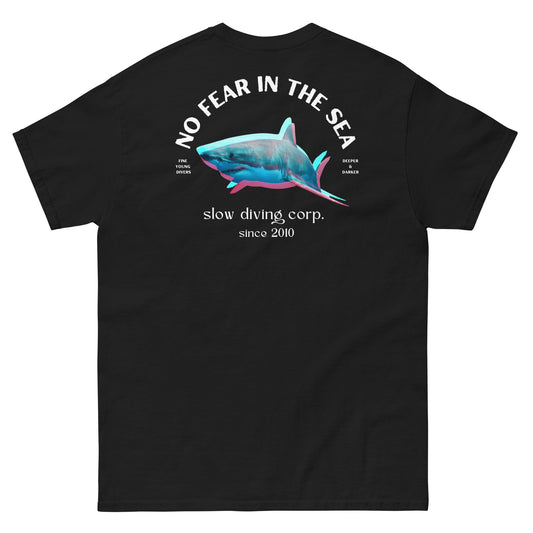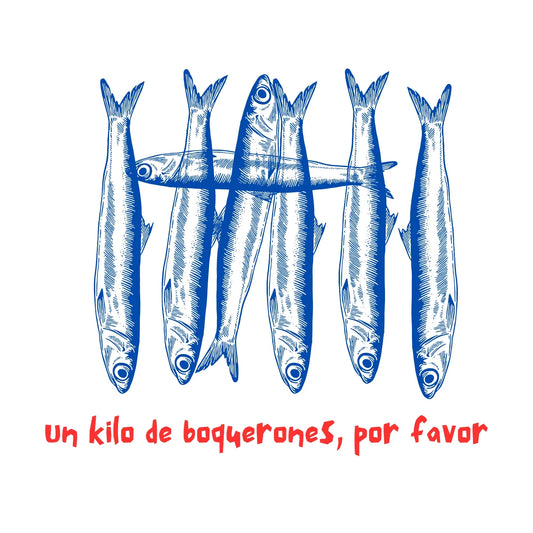Sharm El Sheikh has become the most popular diving destination in the Red Sea. Its extraordinary coral reefs, the exciting diving in the Strait of Tiran, the encounters with whale or hammerhead sharks, the national park of Ras Mohammed or famous wrecks like the Thistlegorm make this destination a must for lovers of the big blue.
Scuba diver and Red Sea lover? This t-shirts are for you :-)
Sharm el Sheikh is located very close to the southern tip of the Sinai Peninsula and is one of the focal points for diving routes to the north of the Red Sea and for liveaboard diving safaris around the peninsula. Its location allows us to make day trips or set out to explore other very interesting areas in the north such as the Rosalie Moller or the wrecks of Abu Nuhas reef. The diving options from Sharm el Sheikh are almost endless, no wonder it is recognized as one of the best diving destinations in the world.
The richness of Sharm el Sheikh's underwater fauna is truly amazing. Large numbers of pelagic fish flock to the northern Red Sea, following the rich currents that this area receives, which also has points that reach depths of 700 meters and bring a lot of food to the surface. This nutrient-rich and salty water results in healthy coral gardens capable of supporting all kinds of colorful reef fauna.
______________________
The best liveaboard offers in the Red Sea
______________________
To this we must add two interesting aspects when considering a diving trip: in Sharm El Sheikh we can dive all year round, with more than pleasant water temperatures (ranging from 28 ° C in summer to 25 ° C in fall and 22 ° C in winter) and also offers many attractions to the hours we release nitrogen, with lively nightlife, good restaurants, bazaars where you can practice your bargaining skills or safaris in the desert.
Best diving areas in Sharm el Sheikh
Coral reefs
Tiran Straits
The Strait of Tiran is home to four coral reefs that are highly sought after by the most experienced and adrenaline seeking divers on the northern route of the Red Sea. Gorgeous coral gardens full of life and sheer drop-offs are the main attractions. The strong currents that surround the reefs can make the dive difficult, but it is worth it for the presence of impressive pelagic life such as hammerhead sharks, dolphins, pilot whales and turtles.

Some of the most extraordinary sea fans in the Red Sea are found in the Strait of Tiran. Pic by andrzej.czyzyk
Ras Mohammed
Ras Mohammed is a national marine park of more than 480 km² protected from fishing since 1983. The treatment that this park receives has made the underwater life welcome it with great devotion: in this reef there are catalogued more than 1,200 species of fish and 220 species of coral where coexist from the smallest and most colorful inhabitants of the ocean to large pelagics. Ras Mohammed has 7 unmissable dive sites that host a large part of the fauna that we can see in the rest of the Red Sea... and it is very close to three of the most interesting wrecks in the north. Keep reading about diving in Ras Mohammed >>>
Wrecks of Sharm el Sheikh
Thistlegorm
The Thistlegorm is one of the most famous wrecks in the world. Sunk by Nazi bombers during the Second World War, the dive in this 126 meter long wreck is one of the most exciting in existence. Through its corridors and holds we enter the history of the bloodiest war, diving among trucks, motorcycles, crew's belongings, ammunition... and where a large amount of fauna has found refuge. If there is one dive not to be missed in Sharm el Sheikh, it is the Thistlegorm dive. Keep reading about the Thistlegorm >>>
SS Dunraven
The Dunraven is not one of the most popular wrecks in the Red Sea, but it is a very interesting wreck. Sunk for more than 130 years at the bottom of the Red Sea, we can see both inside and outside how the corals have taken over what remains of her hull. The fauna that visits it is also remarkable, with schools of batfish, crocodile fish, Napoleon wrasse or huge groupers. Keep reading about the SS Dunraven >>>
Kingston
The Kingston is the oldest wreck on the site, along with the Dunraven. Sunk in 1881 with 70 tons of coal, the passage of time and the rich waters of Sharm el Sheikh have turned this ship into a coral garden. Although the bow is gone, the stern is in good condition and we can appreciate the coral outcrops and the life they harbor in a simple, shallow dive with much to offer.





















